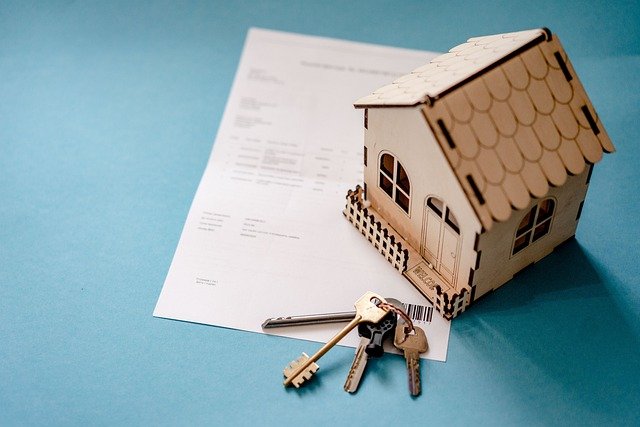Your Guide to the Path of Homeownership: Understanding Rent-To-Own Homes Costs & Features
Rent-to-own homes present an alternative pathway to homeownership for those who may not qualify for traditional mortgages or lack sufficient savings for a deposit. This arrangement allows tenants to rent a property with the option to purchase it at a predetermined price within a specified timeframe. While this approach can help bridge the gap between renting and buying, it requires careful consideration of costs, contract terms, and potential risks involved.

Rent-to-own homes represent a unique approach to achieving homeownership that bridges the gap between renting and buying property outright. This arrangement allows tenants to live in a property while working toward eventual ownership, typically through a combination of rental payments and option fees that may contribute toward the future purchase price.
Understanding Rent-To-Own Agreements
Rent-to-own agreements, also known as lease-purchase or lease-option contracts, establish a legal framework where tenants pay monthly rent while securing the right to purchase the property within a specific period. These contracts typically include an upfront option fee, which grants the exclusive right to buy the home at a predetermined price. The agreement outlines the rental period, purchase price, maintenance responsibilities, and conditions under which the option can be exercised. Most contracts span one to three years, giving tenants time to improve their credit scores, save for a deposit, or resolve other financial obstacles that initially prevented traditional mortgage approval.
Considerations Before Entering a Rent-To-Own Contract
Before committing to a rent-to-own arrangement, prospective tenants should thoroughly evaluate their financial readiness and long-term housing goals. Credit score improvement should be a priority, as most participants aim to qualify for conventional financing before the option period expires. It’s essential to verify the property owner’s legal right to sell and ensure no outstanding liens or legal issues exist. Additionally, consider the local property market trends, as declining home values could result in paying more than the property’s worth. Professional legal review of the contract terms is advisable, particularly regarding maintenance responsibilities, property condition requirements, and circumstances that could void the purchase option.
Key Features and Structure of These Arrangements
Rent-to-own contracts typically feature several key components that distinguish them from standard rental agreements. The option fee, usually ranging from 1% to 5% of the home’s value, secures the right to purchase and may be credited toward the down payment. Monthly rent often exceeds market rates, with the additional amount designated as rent credit toward the eventual purchase. The purchase price is typically set at the contract’s inception, protecting buyers from market appreciation but also preventing them from benefiting from potential depreciation. Maintenance responsibilities often shift partially or entirely to the tenant, reflecting their potential future ownership status. Clear termination clauses outline conditions under which either party can exit the agreement and specify whether accumulated credits are forfeited.
Cost Comparison and Financial Implications
Understanding the financial structure of rent-to-own arrangements is crucial for making informed decisions. The total cost typically exceeds traditional renting but may provide a pathway to ownership for those unable to secure conventional financing.
| Component | Traditional Rent | Rent-To-Own | Purchase Option |
|---|---|---|---|
| Monthly Payment | £800-1,200 | £1,000-1,500 | Varies by agreement |
| Option Fee | N/A | £2,000-10,000 | Credited toward purchase |
| Maintenance Costs | Landlord responsibility | Tenant responsibility | £100-300 monthly |
| Rent Credit | None | £100-400 monthly | Applied to down payment |
| Total 3-Year Cost | £28,800-43,200 | £39,600-64,800 | Includes purchase option |
Prices, rates, or cost estimates mentioned in this article are based on the latest available information but may change over time. Independent research is advised before making financial decisions.
Potential Benefits and Drawbacks and Making an Informed Decision
Rent-to-own arrangements offer several potential advantages, including the opportunity to build equity while improving creditworthiness and the ability to test a neighbourhood before committing to purchase. The locked-in purchase price can protect against market appreciation, and rent credits help accumulate funds toward the down payment. However, significant drawbacks exist, including higher monthly costs compared to traditional rentals, the risk of losing accumulated credits if unable to complete the purchase, and limited flexibility to relocate. Property maintenance responsibilities can create unexpected expenses, and if home values decline, buyers may end up paying above market value. The success of these arrangements largely depends on the participant’s ability to improve their financial situation and secure conventional financing within the option period.
Making an informed decision requires realistic assessment of your financial trajectory, local market conditions, and personal housing needs. Consider consulting with housing counsellors, real estate professionals, and financial advisors to evaluate whether rent-to-own aligns with your homeownership goals. Ensure you understand all contract terms, have realistic expectations about credit improvement timelines, and maintain adequate emergency funds for potential maintenance costs and unexpected financial challenges that could jeopardise your ability to complete the purchase.




